Featured Articles
Hopkins Takes Best Shots At Lying Lance Armstrong
The most enduring of boxing champions, 48-year-old Bernard “The Executioner” Hopkins, knows that controversy sells, even when he’s not intentionally trying to sell it. He has the sometimes unfortunate habit of saying what he thinks and doing what he feels like doing, even when it is politically incorrect to say or do it.
Think not? Consider just a few of the incidents that have garnered the most publicity for the Philadelphia ring legend in recent years.
*Throwing down the Puerto Rican flag at two public gatherings prior to his Sept. 29, 2001, middleweight unification showdown with Felix Trinidad. The second such incident, on Trinidad’s home turf in San Juan, nearly caused a riot.
*Pronouncing that “no white boy can beat me” during the lead-up to his April 18, 2008, light-heavyweight bout with undefeated Welshman Joe Calzaghe in Las Vegas. Calzaghe, his pale complexion not proving an insurmountable hindrance, won a 12-round split decision despite being knocked down in the first round.
*Voicing his displeasure with the seeming lack of urgency by Philadelphia Eagles quarterback Donovan McNabb in the closing minutes of a 24-21 loss to the New England Patriots in Super Bowl XXXIX on Feb. 6, 2005. “I’m disappointed in Donovan McNabb,” Hopkins said. “I’m going to be straight up, I’m not holding back. I’ll say it to his face.”
But with a July 13 defense of his IBF 175-pound title against Germany’s Karo Murat (25-1-1, 15 KOs) coming up at the Barclays Center in Brooklyn, N.Y., Hopkins (53-6-2, 32 KOs) no longer seems capable of, or even that interested in, inciting frenzy with an imprudent word or deed. He wants to be appreciated for the uniqueness of his career, for the incredible longevity of it, and most of all for the unsullied manner, in a physical sense, in which he has achieved it.
The simple act of beating up on a 29-year-old German who is virtually anonymous in these United States isn’t apt to stop some fight fans from yawning at still another B-Hop victory on the path to eventual enshrinement in the International Boxing Hall of Fame. Maybe extending his latest championship reign until he reaches the ridiculous age of 50 will gain him the recognition he believes he deserves. Then again, losing to mystery man Murat might be the trick. It could be argued that people have become too comfortable with Hopkins’ successes than to be inspired or excited about them.
To Hopkins’ way of thinking, negativity in today’s jaded sports world is the fastest, surest way for someone to call attention to himself or herself. The biggest headlines go to athletes who test positive for performance-enhancing drugs; who slap around their wives or girlfriends, or at least serial-cheat on them; who get into wee-hours brawls at strip clubs, and who snort more coke than Al Pacino in Scarface.
Living clean is, well, so … boring.
Which maybe explains why Hopkins ripped into a seemingly unlikely target in the press room at Atlantic City’s Boardwalk Hall a couple of hours before Argentine junior welterweight Lucas Matthysse impressively stopped Lamont Peterson in three rounds in the Showtime-televised main event.
That would be disgraced cyclist Lance Armstrong, recently stripped of his seven Tour de France cycling championships and the teary-eyed confessor of his PED-fueled misdeeds — after years of adamantly professing his innocence — in a pair of highly rated TV interviews with Oprah Winfrey.
“Lance Armstrong pulled the ultimate betrayal and the biggest con in sports history that I know of,” Hopkins, his voice rising, said during a 47-minute session with a few media members. “He beat Pete Rose out, and that was just gambling.
“Here I am, a year and a half from being 50 and I’m still taking names and whupping ass. You telling me that’s not a story? But all I hear is `When are you gonna quit? When are you gonna retire?’ Don’t you understand that y’all are witnessing something that you might not see again in your lifetime? Maybe you think this is no big deal. Maybe you think this is something you’re going to be covering over and over. Maybe you think you’ll see somebody else who’s gonna make 20 title defenses in one weight class over 10-plus years, or somebody else who’s gonna fight at this high a level until he’s 48.”
Hopkins stressed that his unprecedented stay at or near the top of a brutal, unforgiving profession is not as rooted in superior physical gifts as it is in his fanatical obsession with keeping his body, which he calls his “temple,” in perfect working order.
“By no means am I perfect,” Hopkins said. “But in the game of boxing, the way I live, I am super-perfect. I am super-perfect when it comes to taking care of myself. I’m not that talented. Roy Jones was 10 times more talented than me. James Toney was more talented than me. But something I understood from Day 1 was that you got to keep your body clean, your mind clean, and you can’t get caught up in the bullbleep that comes with success. That’s why it’s hard for these kids to keep up with me.
“I take care of my body, my temple. They win a fight, they’re out on the dance floor, at a nightclub somewhere. Me, I’m in my suite, in the bathtub or in bed, just resting. That’s the secret to longevity.”
Hopkins also dismisses the suggestion — forwarded by, among others, baseball superstars Barry Bonds and Roger Clemens — who claimed they unknowingly ingested banned substances provided by sycophants.
“I got to send a message to young people that you can do things without cheating,” Hopkins continued. “You can do things without taking a shortcut.
“When you see somebody that has to do something (illegal) to get ahead … man, everybody knows what the deal is. We’re grown men. If somebody gives you something and you take it and then claim to not know what it is, you’re not taking full responsibility. There’s nobody in this business who should ever say the only reason he has something in his system is because somebody else gave it to him without his knowing anything about it. Are you a bleeping idiot? When I hear that crap, it makes me mad. I do things the right way. Guys who don’t do it the right way and get caught ruin it for all of us who do it the right way.
“I’ll (pee) in any bottle. I’ll give my stool if they need that. I will let them follow me around to see what I eat, what I drink. But this country has a problem with doing it right. What’s promoted is always the negative. The guy that is doing it right gets no coverage. But the guy who’s into skullduggery and subterfuge, that’s news. I can’t change it. I’m just bold enough to speak it.
“People say, `Why isn’t more positive news reported?’ Because they really must not want that. We Americans are hypocrites that way.”
Hopkins isn’t being hypocritical when he says that his main goal now, for legacy purposes, is to have another really big fight on his resume, rather than to add to his collection of 175-pount title belts. He said he’s fighting Murat, whom he described as a “come-forward guy, although I don’t see anything in him that indicates he’s a special fighter,” because he promised to fulfill his IBF mandatory if and when he dethroned Tavoris Cloud. He did, and he is.
But neither WBA champion Beibut Shumenov (13-1, 8 KOs), of Kazakhstan, or WBO ruler Nathan Cleverly (26-0, 12 KOs), of Wales, is particularly high on Hopkins’ to-do list before retirement, and neither of those names as possible opponents for the ageless wonder is apt to cause the hearts of Showtime Sports honcho Stephen Espinoza or most fight fans to go pitter-patter.
That leaves guys from down under, and we’re not talking residents of Australia.
“To me, the superfights out there for me are with the guys that might want to come up (from super middleweight),” said Hopkins, who said his last opponent to bring the requisite juice was now-business partner Oscar De La Hoya, whom he knocked out in nine rounds on Sept. 18, 2004, to fully unify the middleweight championship. “(Andre) Ward would be an interesting fight, but we’ve established how I feel about that, and Ward, too. (Each professes to have too much respect for the other to square off.) (Editor Note: After Hopkins beats Tavoris Cloud in Brooklyn, Ward left the door open for a Ward-Hopkins fight, saying that the purse would have to be immense.)
“(IBF 168-pound champ Carl) Froch? Big fight. If I go to Europe, and I’d be glad to, or if he comes here, which I believe he did twice, in Atlantic City, it’d be a really big fight. And if Froch beats (WBA titlist Mikkel Kessler), that would make it a superfight. (Former IBF titlist Lucian) Bute would be another superfight.”
Anyone else?
“That `Triple G’ guy (WBA middleweight king Gennady Golovkin),” Hopkins said. “You say he’s middleweight? Well, I jumped up two weight classes from 160 to fight (Antonio) Tarver and everybody thought I was losing my mind.”
Someone mentioned that Froch has already said he would like to mix it up with B-Hop for fun and profit.
“First of all, I accept,” Hopkins said, laughing. “I’m in.”
At a catchweight?
“I did it for (Kelly) Pavlik,” he said. “I did it for Winky Wright. I can cut five pounds off this lean body. Come on, let’s go where the money is.”
-

 Featured Articles3 weeks ago
Featured Articles3 weeks agoThomas Hauser’s Literary Notes: Johnny Greaves Tells a Sad Tale
-
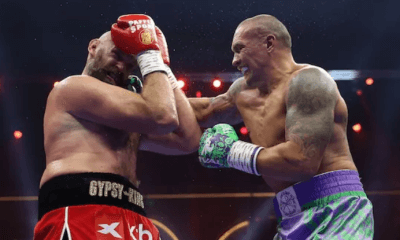
 Featured Articles2 weeks ago
Featured Articles2 weeks agoBoxing Notes and Nuggets from Thomas Hauser
-
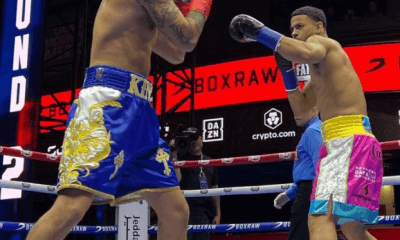
 Featured Articles4 weeks ago
Featured Articles4 weeks agoRolly Romero Upsets Ryan Garcia in the Finale of a Times Square Tripleheader
-
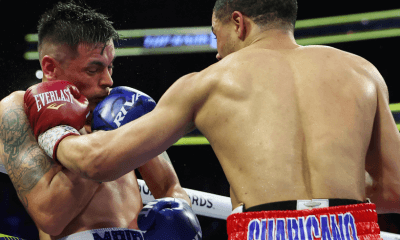
 Featured Articles4 weeks ago
Featured Articles4 weeks agoUndercard Results and Recaps from the Inoue-Cardenas Show in Las Vegas
-

 Featured Articles4 weeks ago
Featured Articles4 weeks agoCanelo Alvarez Upends Dancing Machine William Scull in Saudi Arabia
-
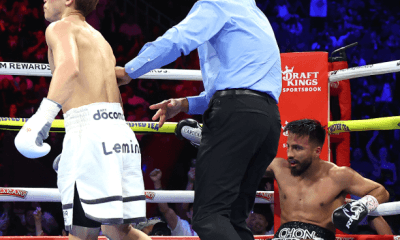
 Featured Articles4 weeks ago
Featured Articles4 weeks agoBombs Away in Las Vegas where Inoue and Espinoza Scored Smashing Triumphs
-
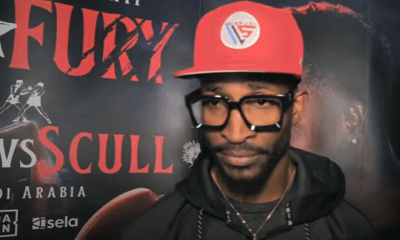
 Featured Articles4 weeks ago
Featured Articles4 weeks agoArne’s Almanac: The Good, the Bad, and the (Mostly) Ugly; a Weekend Boxing Recap and More
-
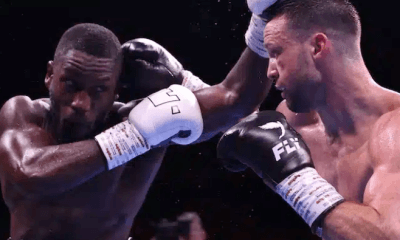
 Featured Articles1 week ago
Featured Articles1 week agoEkow Essuman Upsets Josh Taylor and Moses Itauma Blasts Out Mike Balogun in Glasgow



















